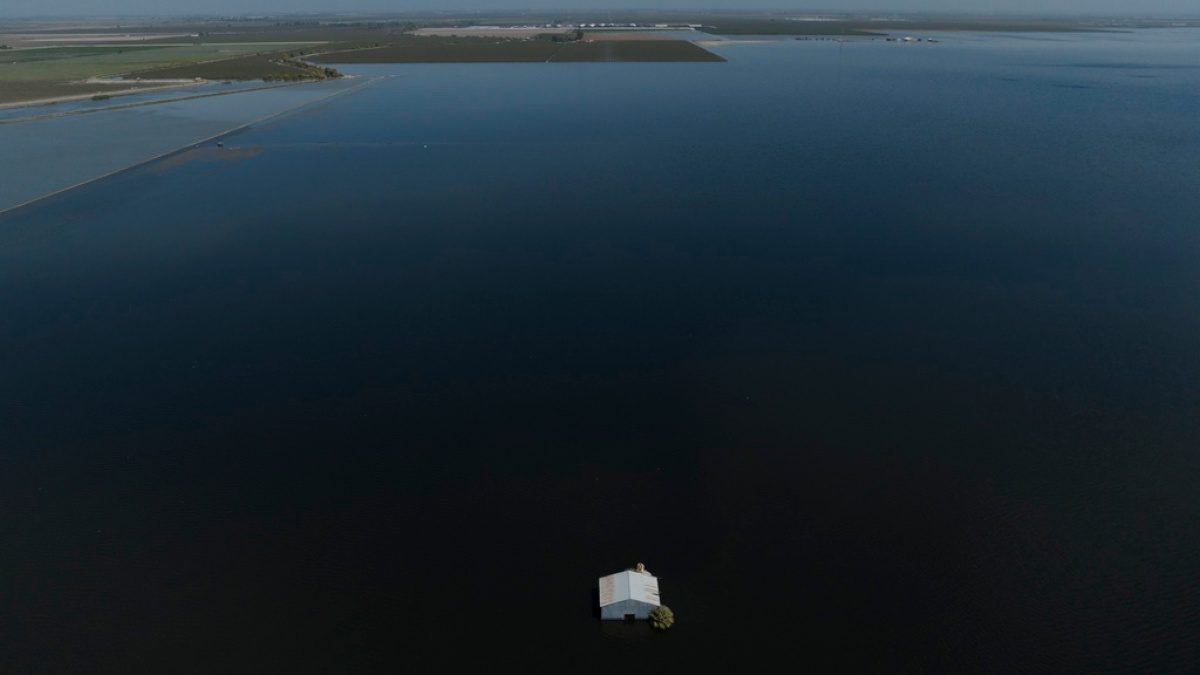Global Courant 2023-04-28 22:09:16
Los Angeles, California, USA – In early March, dairy farmer Tom Barcellos watched the Tule River burst its banks and flood the area around his farm in Tulare County, a center of agricultural production in California’s San Joaquin Valley.
“The river has broken out in several places. My farm didn’t flood, but many neighbors did,” Barcellos, a lifelong farmer, told Al Jazeera during a recent phone call. “We were on river watch, to prevent debris and trees from clogging diversion structures.”
In that time, the state weathered the latest storms in a series of 13 atmospheric rivers, bands of intense moisture that brought heavy rain in some regions and heavy snow in others.
Now the winter storms are over. But farmers like Barcellos are still dealing with the precipitation as flood waters linger — or resurface in some areas, as record-breaking snowfall thaws in the mountains.
Communities like Tulare County, downstream from California’s mountain ranges, are bracing for the worst. “It all depends on how fast the snow melts. A large melt that hit suddenly could overwhelm our capacity, and we could experience another round of flooding,” Barcellos said. “Mother Nature is in control.”
Tulare County officials estimate the storms and flooding have already caused about $40 million in damage.
Barcellos explained that even as farmers in the area evacuate their livestock, their businesses are still being damaged. Many dairy farmers also grow feed for cows on their land. So when one farm is flooded, the impact is felt by many others who must find new sources of food, often from further afield.
“A neighbor had to move all his cows and his feed is still under water,” says Barcellos. “So we’ll be affected indirectly, but we’ll feel it in our wallets.”
“Feast or Famine”
The melting snow pack is already visible across the state. Yosemite National Park, one of California’s most famous outdoor destinations nestled in the Sierra Nevada Mountains, will close Friday as its rivers are swollen by the warming snow.
The possibility of further flooding has created headaches in parts of the state that already had a problem with excess rainfall from atmospheric rivers.
Communities in places like Tulare and Kings County, two hubs of agricultural production bordering each other in the San Joaquin Valley, have already seen large areas of farmland flooded.
“In regions of the Central Valley that have experienced flooding, we are hearing from farm workers who are concerned about the potential impact more flooding could have on job opportunities,” said Ephraim Camacho, a community worker with California Rural Legal Assistance. , an organization that advocates for low-income communities in rural parts of the state. “It’s hard to stop working when you have bills and you’re not getting paid much already.”
In Kings County, residents have begun to witness the re-emergence of Tulare Lake, once the largest freshwater body west of the Mississippi River. Stretching over more than 2,072 square kilometers (800 sq mi), it was drained to make way for farmland and disappeared by the mid-20th century.
Water fills Tulare soil outside Corcoran, California, in March (David Swanson/Reuters)
But aerial photos last month from NASA, the US space agency, show that the lake is reclaiming dry, brown patches of land, filling the landscape with green and blue. The rainfall in the area had brought relief from California’s extreme drought driest period of 22 years in nearly 1200 years.
“California weather is feast or famine. You’ve had long stretches of dry winters punctuated by very wet winters,” Chad Hecht, a meteorologist at the Center for Western Weather and Water Extremes at the University of California, San Diego’s Scripps Institution of Oceanography, told Al Jazeera over the phone. “That’s been especially the case over the last 10 years.”
What happens next, Hecht added, depends largely on the weather the region experiences in the coming months.
“If it is very warm and the snow melts quickly, there may be more flooding. If it melts at a more incremental rate, that makes things more manageable,” he said.
California will continue to support the communities of Tulare Lake Basin.
We are providing relief to the counties affected by recent and expected flooding this spring and summer. pic.twitter.com/9TQG7rnUi6
— Office of the Governor of California (@CAgovernor) April 27, 2023
Affected residents
The stakes of that melting snow are significant for California’s agricultural industry.
2021, Kings And Tulare counties produced more than $2.3 billion and $8 billion in agricultural products, respectively. But winter storms from December through March destroyed recent crops. More rising water could pose further challenges for farmers after a difficult few months.
“You can take steps to prepare, but when that amount of water comes, all you can do is hope it comes at a manageable rate,” says Barcellos, the dairy farmer.
Still, Barcellos said people in the region have been dealing with flooding for decades, and he recalled that Lake Tulare reappeared in years of exceptional rainfall like 1969 and 1983.
“People would take old cars and stack them to build up the levees,” he recalls. “Everyone participated.”
Michael Claiborne, an attorney with the Leadership Counsel for Justice and Accountability, which focuses on issues of inequality in rural California, told Al Jazeera that residents of towns like Allensworth, located on the shores of the former Tulare Lake, are concerned about the possibility of further evacuations after being displaced by flooding during atmospheric rivers.
“In the areas around Lake Tulare, some people were evacuated from their homes at very short notice. So there is concern about the possibility of more flooding,” Claiborne said. “If you come from a low-income household, it’s even harder to leave the house and put your life on hold.”








